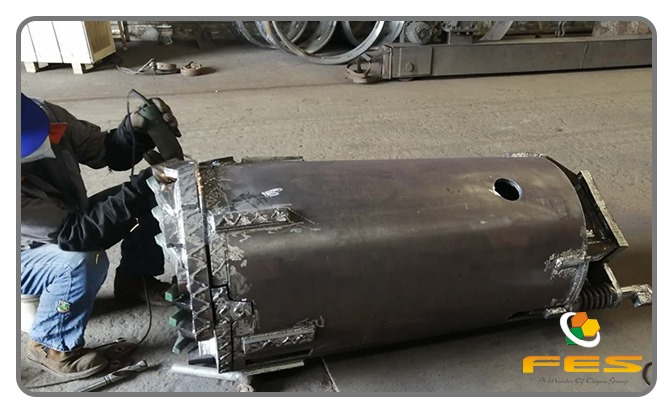Complete Guide About FES Drilling Buckets for Foundation Drilling: Function, Application and maintenance
Drilling buckets are vital equipment in construction and excavation projects, especially when it comes to deep foundation work. But what exactly is a drilling bucket, and how can you ensure its optimal performance? In this article, we will explore the structure, types, applications, problems when using the drilling bucket and maintenance of drilling buckets, offering insights on how to get the most out of this essential foundation drilling tool for your projects.
What is a Drilling Bucket?
A drilling bucket is used to drill in construction, foundation work, and deep excavation projects. It consists of ten main parts, including: kelly box, unlocking mechanism, roof, wear blocks , bucket body, upper bottom plate, lower floor, lower mandrel, pilot, hinge. The following diagram provides a detailed breakdown of these parts: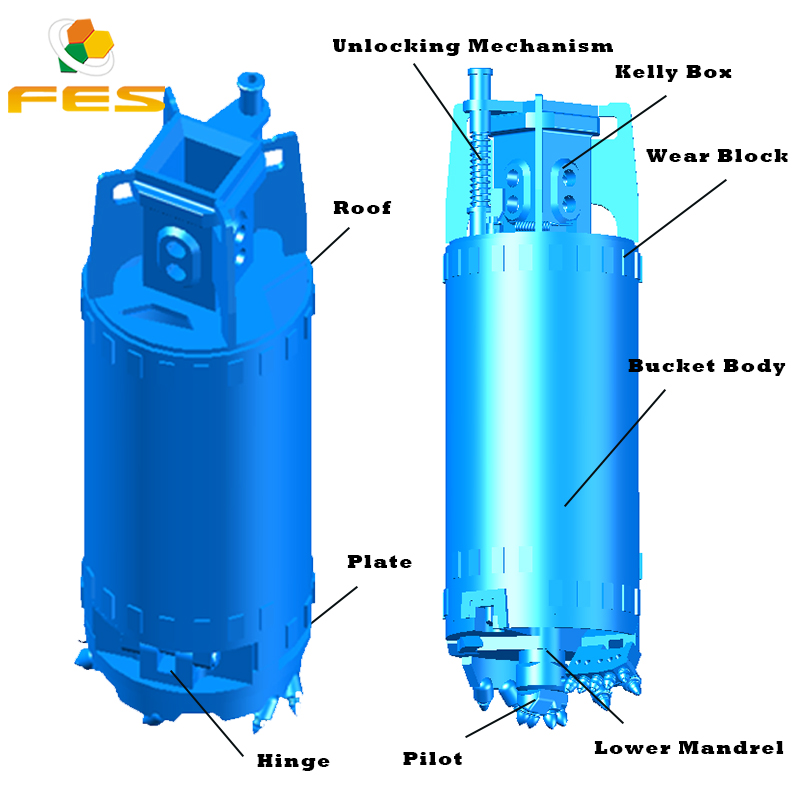
Diagram of FES Drilling Bucket Parts
A drilling bucket functions both as a drilling tool and as a spoil-loading tool. The image below illustrates the role of each component, including passage, sludge containment, spoil discharge, guidance, and penetration.
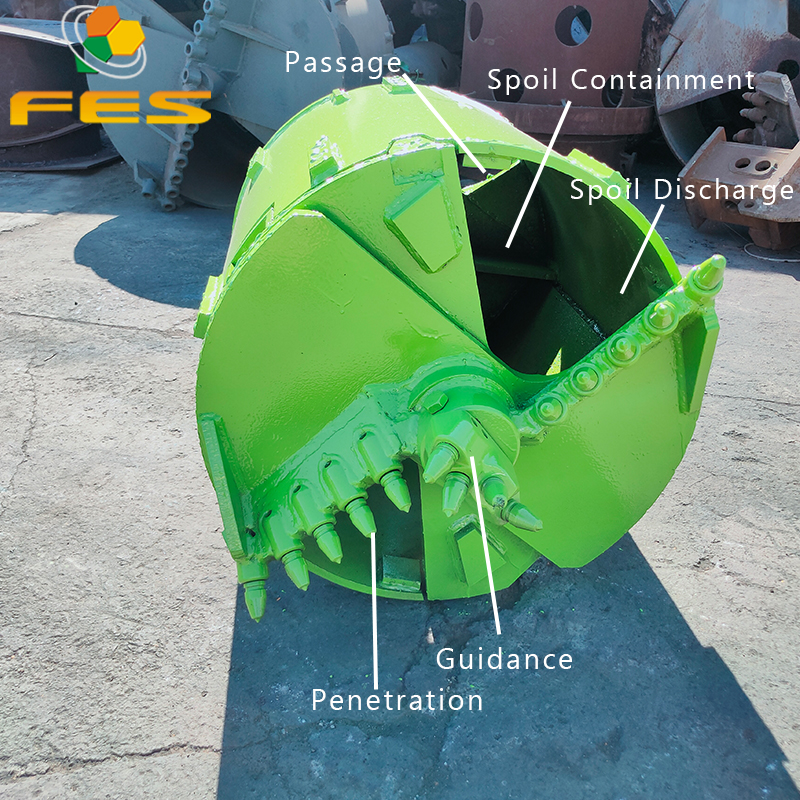
Classification of Drilling Buckets and Their Applicable Soil Layers
Drilling buckets can be classified based on different criteria:
- By Teeth Type: Can be divided into drilling buckets with bullet teeth and clay/soil teeth.
- By Base Plate Structure: Single-bottom buckets and double-bottom buckets.
- By Door Type: Single-door buckets and double-door buckets.
- By Taper Design: Conical Bottomed buckets and straight drilling buckets.
In general, double-bottom drilling buckets are suitable for a wide range of soil conditions, including both highly mobile sandy layers and highly cohesive clay layers. Single-bottom buckets, however, are only effective in soil layers and cannot be used in quicksand layers, as they fail to retrieve sediment from the borehole. Double-door buckets are versatile and applicable to most soil types, whereas single-door buckets are mainly used for large-diameter gravel and hard clay. For highly cohesive soil layers, the centrifugal drilling bucket provides an advantage in spoil discharge.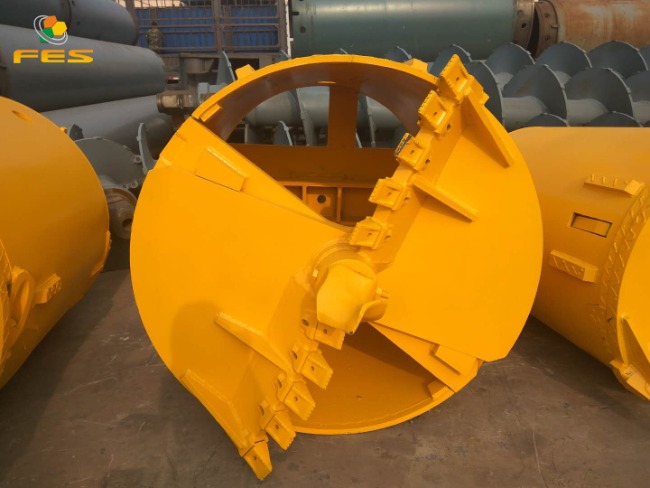
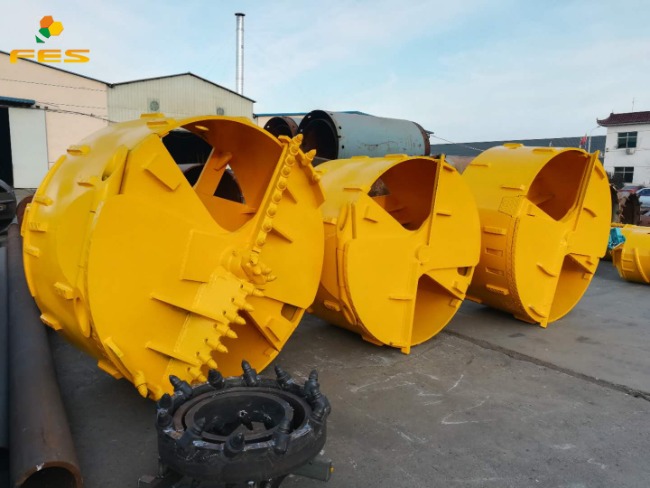
Common Problems When Using Drilling Buckets and FES Solutions
During construction, drilling buckets may encounter several challenges. FES drilling buckets are specially designed to handle these issues.
· Inefficient Soil DischargeIssue: Soil or debris does not discharge smoothly from the bucket, reducing drilling efficiency.
FES drilling buckets feature an optimized discharge structure with well-designed bottom openings to ensure smooth soil release. The use of high-strength, wear-resistant materials minimizes clogging risks, even in high-viscosity soils such as clay.
· Low Drilling Efficiency
Issue: Slow penetration and reduced drilling performance.
FES drilling buckets are equipped with high-quality tungsten carbide drill teeth , round holder, and PR4 pilot, ensuring that the tool meets the required cutting strength. After extensive design calculations and product testing, the cutting angle has been optimized to enhance cutting efficiency while minimizing unnecessary wear from repeated cutting. From a manufacturing process, the high-precision, well-welded drill bucket maintains a concentricity deviation of less than 3mm, significantly improving drilling efficiency.
· Drilling Bucket Stuck in the Borehole
Issue: Gets stuck against the borehole wall, preventing the drill mast from rotating, the main winch from lifting, and the drill mast from lowering. This issue is usually caused by geological conditions, improper operation and drilling bucket issues.
FES drilling buckets address these challenges with high-strength materials and an optimized locking design for stability, enhanced teeth and structure for better adaptability. Besides, FES Support Team provides clear maintenance guidance, ensuring ease of use and reducing operational failures.
· Malfunctioning Bucket Door
Issue: The bucket door fails to open or close properly, affecting soil discharge.
FES drilling buckets feature a high-reliability hinge system combined with precisely engineered locking mechanisms to ensure smooth operation over long periods.
· Drilling Bucket Damage or Fractures
Issue: Damage to the bucket body or critical components, impacting project progress.
FES drilling buckets use high-strength alloy steel and advanced welding techniques to significantly enhance durability and impact resistance. Even under high-intensity operations, they maintain structural integrity and extend service life.
· Bearing Malfunction
Issue: Unusual noise or jamming when the bucket rotates.
FES drilling buckets are equipped with high-precision sealed bearings and an optimized lubrication system to prevent mud infiltration, ensuring long-term smooth operation. Wear-resistant materials further reduce bearing degradation, increasing overall longevity.
· Limited Adaptability
Issue: The drilling bucket is not suited for different soil conditions or construction environments.
FES offers a wide range of drilling bucket types, including single-bottom, double-bottom, and rock drilling buckets, allowing for precise selection based on specific geological conditions. This ensures optimal performance, reduces operational challenges, and enhances efficiency.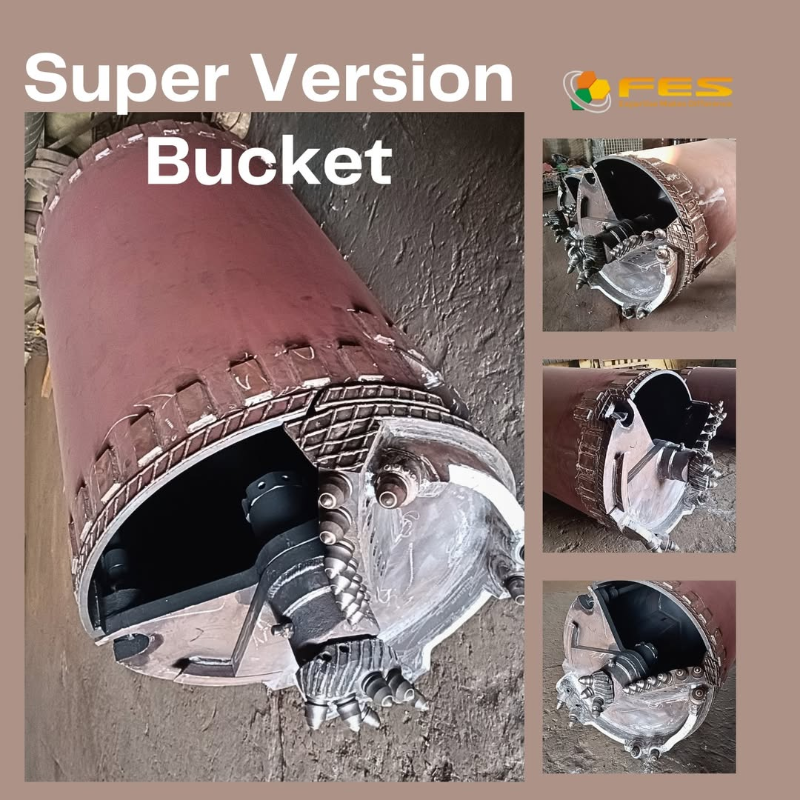
Optimized Drilling Bucket Operation Guidelines
- Soil Type Consideration:
- For sandy soil, extract the bucket when it reaches 80%-90% of its capacity.
- For clay layers, extract at 70% capacity.
- Before lifting, apply downward pressure and reverse rotation 1-2 times to ensure the bucket door is closed.
- Spoil Discharge:
- If spoil does not discharge automatically, rotate the bucket back and forth until the soil is fully released.
- Avoid shaking the bucket or striking fixed objects to force spoil discharge.
- Handling Blockages:
- If the bucket becomes stuck while lifting, move it up and down while slowly reversing rotation to release it.
- Avoid forcefully pulling the bucket out, as this may cause damage.
- Maintenance of Drill Teeth:
- Replace worn or damaged teeth promptly with the same specifications.
- Foreign Object Precaution:
- Do not use the drilling bucket as an accident-handling tool.
Maintenance and Care Guidelines
- Spring Inspection: Regularly measure spring compression. If deviation exceeds 15% of factory settings, replace immediately.
- Sediment Cleaning: Flush internal mechanisms after each operation to prevent clogging.
- Wear Inspection: Periodically check weld seams, door unlocking mechanisms, base plates, and drill teeth for wear.
By following these guidelines, FES drilling buckets can maintain optimal performance, extend service life, and ensure efficient foundation drilling operations.







